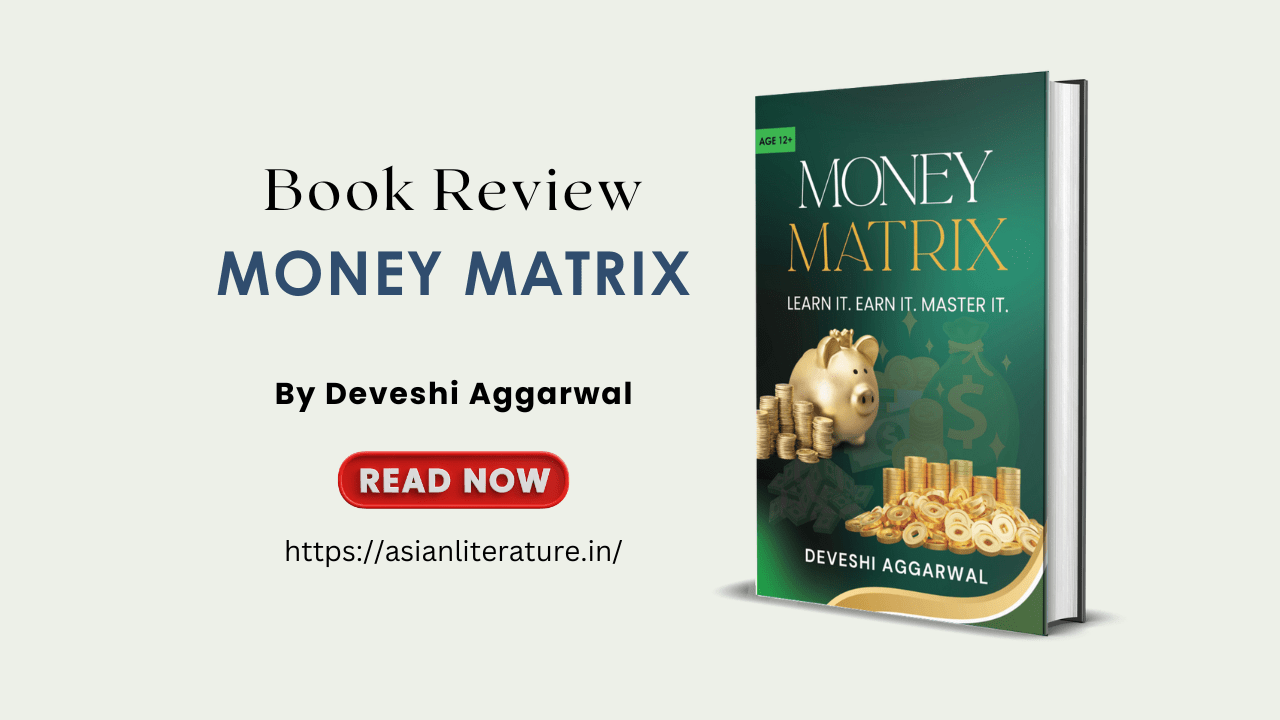
Money Matrix
Financial literacy books often speak from the lofty perch of adulthood, but Money Matrix turns that convention on its head. Written by 14-year-old Deveshi Aggarwal, this guide proves that age is no barrier to financial wisdom. Instead of dry lectures, Aggarwal offers an engaging, activity-rich journey designed to help teenagers understand, earn, and manage money long before they enter the workforce.
The book’s strength lies in its clarity and structure. Across nine thoughtfully arranged chapters, Aggarwal leads readers from the very basics—“What is money?”—to advanced concepts like investing, credit scores, and digital finance. Each topic unfolds with a conversational tone that feels like a peer-to-peer dialogue rather than a top-down lecture. She demystifies intimidating ideas—compound interest, opportunity cost, inflation—using examples teens actually relate to: gaming subscriptions, impulse sneaker buys, or saving for a bike.
Interactive exercises elevate the book beyond traditional guides. Quizzes, reflection boxes, and real-life scenarios invite readers to calculate budgets, track spending, and analyze value versus price. For example, the “24-hour rule” challenge asks readers to pause before making purchases, encouraging habits that build long-term discipline. These hands-on sections are both educational and fun, reinforcing lessons through practice rather than passive reading.
Aggarwal also understands the power of narrative. Rather than presenting money as a cold set of numbers, she frames it as a tool for freedom and self-expression. Her anecdotes about earning small allowances, starting side gigs, and balancing school with creative projects provide a relatable blueprint for teens seeking independence. The book also reflects her advocacy for gender equality, subtly showing how financial literacy empowers young women to take control of their futures.
Stylistically, Money Matrix is lively and visually friendly. Callout boxes, icons, and simple infographics break complex ideas into bite-sized pieces. Even abstract topics like diversification and risk-adjusted return are explained with accessible metaphors—like LEGO bricks for stocks or smoothies for ETFs. This accessibility ensures that even readers as young as twelve can grasp foundational concepts without feeling overwhelmed.
Critically, the book doesn’t shy away from the realities of digital finance. In a world where cash is increasingly replaced by e-wallets and mobile payments, Aggarwal covers cybersecurity, phishing scams, and privacy essentials. Her guidance on using apps like Mint or YNAB, coupled with reminders about strong passwords and two-factor authentication, makes the book timely for today’s tech-savvy youth.
If there is a minor shortcoming, it lies in the book’s optimistic tone. While positivity is refreshing, readers in challenging financial circumstances may find some scenarios—like starting investment portfolios or traveling abroad—less relatable. A deeper acknowledgment of socioeconomic diversity could have broadened its reach. Yet this is a small quibble in an otherwise inclusive guide that emphasizes mindset and small, consistent steps over wealth itself.
Ultimately, Money Matrix succeeds because it speaks directly to its audience. It’s not merely about dollars and cents; it’s about building confidence, independence, and lifelong habits. Deveshi Aggarwal’s debut is both a teaching tool and a manifesto for financial empowerment—proof that the next generation is ready not just to learn money, but to master it.
Book Title: Money Matrix
Author: Deveshi Aggarwal
Publisher: Evincepub Publishing

